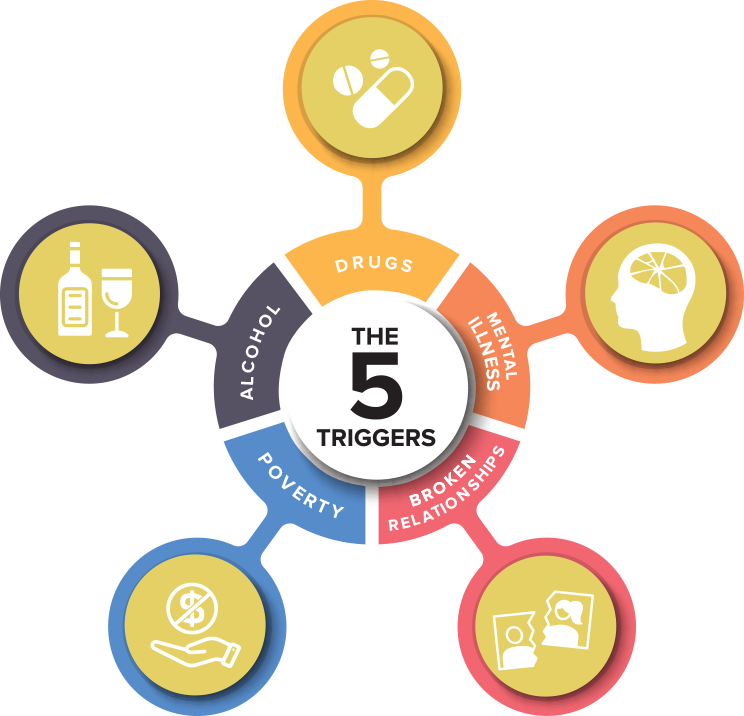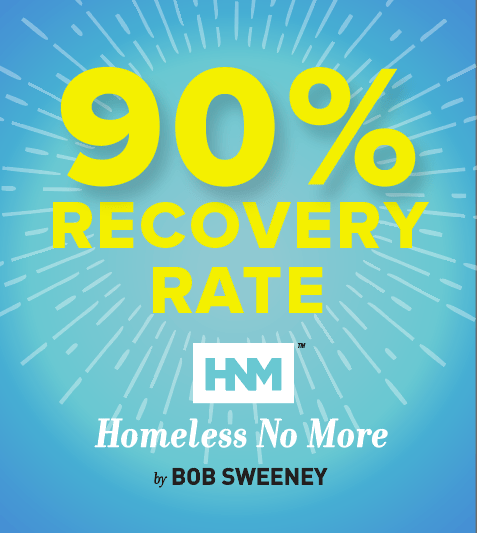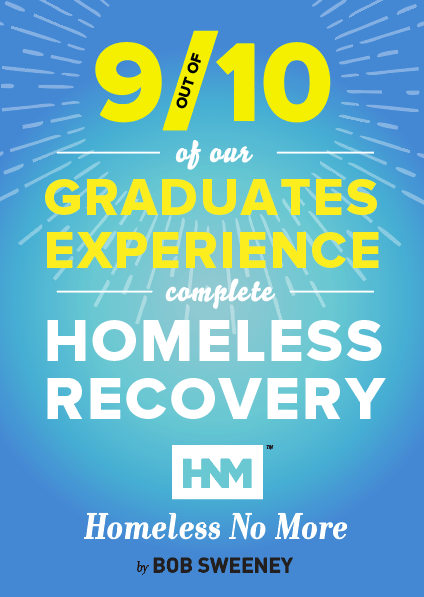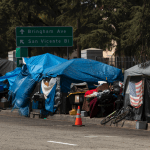Pictured above: Linda & Margaret, Homeless No More 2023 Graduates from Dallas, TX.
This Article Addresses:
- Who Are Most Homeless and Why?
- Dallas Homeless Population: A Snapshot
- Texas Homeless Population 2023: An Overview
- The Needs of the Homeless
- How to Help Homeless People
As someone deeply entrenched in the battle against homelessness through the Homeless No More program, I’ve seen firsthand the complex landscape of homelessness in cities across America, particularly in Dallas where our shelter, Dallas LIFE is located. Today, we’re diving deep into understanding this issue and highlighting how you, as part of our community, can contribute meaningfully to this cause.
Introduction
The issue of homelessness is a national crisis, manifesting uniquely in every city, including Dallas. The varied faces of homelessness remind us that behind each statistic is a person seeking hope and a way out of their predicament. Our efforts through the Homeless No More program have been instrumental, but the path ahead requires a collective push from every one of us in the community.
Who Are Most Homeless and Why?
Homelessness affects a diverse group of individuals, but certain populations are more vulnerable, including veterans, the mentally ill, those with substance abuse issues, and individuals facing economic hardships. Systemic issues, lack of affordable housing, insufficient mental health services, and social inequities contribute to the prevalence of homelessness among these groups.

The Causes of Homelessness: The Five Triggers
Early in my career, I became a national leading expert on homeless recovery by identifying and addressing the five triggers of homelessness: drugs, alcohol, poverty, broken relationships, and mental illness. From overcoming addictions and restoring relationships to finding permanent employment and housing, my program’s participants learn to re-enter society as productive citizens.
My approach to homelessness is founded upon recognizing the issue as a condition that can be treated in recovery. A healthy balance of accountability and compassion challenges program participants to reestablish themselves as self-sufficient in life while finding joy in the journey. I always say, “Homelessness is not a disease we need to cure but a disorder we need to address.”
Homelessness is not a disease we need to cure but a disorder we need to address.
The Types and Faces of Homelessness
Homelessness manifests in several forms, including:
- Chronic Homelessness – Individuals who have been homeless for over a year or have experienced repeated instances of homelessness while struggling with a disabling condition.
- Episodic Homelessness – Those who frequently enter and exit homelessness, often due to economic instability or health issues.
- Transitional Homelessness – Individuals or families facing a temporary housing crisis due to sudden life changes.
- Hidden Homelessness – People who may not be on the streets but lack stable housing, staying with friends or in temporary accommodations without security or permanence.
A literal “homeless person” refers to someone who lacks a fixed, regular, and adequate nighttime residence, which includes those sleeping in shelters, outdoors, or in places not meant for human habitation.
Dallas Homeless Population: A Snapshot
In recent years, Dallas has faced significant challenges with homelessness. Annual counts and reports indicate fluctuations in the number of individuals experiencing homelessness, highlighting the ongoing need for effective solutions and support systems. Efforts by local organizations and government initiatives aim to address this issue, but the complexity of homelessness, compounded by economic and social factors, makes it an enduring challenge for the city.
Recent reports have shed light on the gravity of the situation in Dallas. In 2023, a survey found a slight decrease in the overall homeless population, with a total of 4,244 individuals identified, down from the previous year’s count. However, this minor improvement masks the stark increase in chronic homelessness, which saw a dramatic spike of 214% from the previous year, underscoring the need for permanent solutions over temporary fixes. Moreover, a partnership with the White House and local agencies aims to bolster efforts to combat homelessness, targeting a 25% reduction by 2025. 1
Does Dallas, TX, Have a Homeless Problem?
The presence of homeless individuals and families in Dallas, alongside efforts by various organizations to provide shelter, healthcare, and rehousing services, confirms that homelessness remains a significant problem in the city. The challenge is multifaceted, involving economic instability, the lack of addressing the root causes of homelessness, housing affordability, and limited-to-no access to comprehensive healthcare and social services.
To address these concerns, it’s crucial to continue supporting programs like Homeless No More that offer comprehensive services and solutions tailored to address the unique, underlying causes of Dallas’s homeless population.
The Impact on the Community
The proliferation of homeless encampments and the increasing visibility of homelessness in Dallas have sparked a debate on the best approaches to address this issue. While some advocate for the development of affordable housing and support services, others suggest improving the conditions of encampments as a temporary solution. Our Homeless No More program works to discover the root causes of homelessness which offers authentic, lasting recovery and not just temporary relief.
The city’s efforts to tackle homelessness, including initiatives like the R.E.A.L. Time Rehousing Initiative, demonstrate a commitment to finding lasting solutions. However, the challenge remains significant, requiring concerted efforts from both public and private sectors.
In response to these challenges, Texas has allocated funds to address homelessness, mental illness, and substance abuse. Cities across the state have adopted various strategies, from camping bans to the creation of large shelters and citywide databases, to manage and support their homeless populations.2
Texas Homeless Population 2023: An Overview
In 2023, Texas faced a challenging landscape regarding homelessness, marked by trends that demand both our attention and action. The Point-in-Time count 3, a critical tool in understanding homelessness, provided insights into the current state of affairs across the Texas Balance of State Continuum of Care (TX BoS CoC), covering an extensive area of 215 counties. Last year’s count revealed that we have 9,065 individuals experiencing homelessness, with a notable distribution between sheltered (43%) and unsheltered (57%) individuals.
The detailed age and demographic breakdown of the count reflects a diverse group of individuals under the homelessness umbrella, including children, youth, adults across age groups, and a significant number of veterans and individuals with mental health disorders. This data not only helps us understand the scope but also the specific needs of these populations.
In a broader context, homelessness in Texas saw an increase of more than 12% in 2023, aligning with national trends. This rise has been significantly influenced by the affordability crisis, with low-income households facing higher rents and the absence of pandemic-era safety nets like federal rent relief funds and eviction pauses. This situation has escalated the risk of homelessness for many, underscoring the urgent need for effective solutions.
Despite these challenges, there are glimmers of hope and progress. Efforts in major Texas cities to quickly transition people experiencing homelessness into housing, coupled with support services, have shown promising results. For instance, Dallas witnessed significant decreases in unsheltered and chronic homelessness, thanks to initiatives like the R.E.A.L. Time Rehousing Initiative, which placed 2,700 people into new housing, aiming for 6,000 by the end of 2025. 4
This snapshot of Texas’s homeless population in 2023 underlines the importance of continued investment in housing and support services. It highlights the need for a multi-faceted approach to address the underlying causes of homelessness, including drugs, alcohol, mental illness, broken relationships, and poverty so that when housing is established foundational elements are in place to support continued and quality maintenance of a new lifestyle. As we look to the future, it’s clear that collaboration, innovation, and sustained efforts are key to making homelessness in Texas rare, brief, and non-recurring. 5
The Needs of the Homeless
In addressing the immediate and long-term needs of those experiencing homelessness, we recognize both the essentials for daily survival and the foundational supports for a sustainable transition to stability. Here are five critical needs:
- Shelter and Safety – Immediate protection from the elements and a secure place to rest.
- Nutritious Food and Clean Water – Access to healthy meals and potable water.
- Physical Medical and Dental Care Services – Medical and dental health care to address both acute and chronic conditions.
- Mental, Emotional and Spiritual Health Services – Mental, emotional and spiritual health services for both past trauma and family issues, as well as normal life issues that require professional and community support.
- Employment and Training Programs – Opportunities for skill development and job placement to ensure economic stability.
- Legal and Advocacy Support – Assistance with navigating legal issues, including identification, benefits access, and housing rights.
You Can Make A Difference
Your involvement can make a tangible difference in the lives of those facing homelessness. By visiting the Homeless No More donation page, you have the opportunity to contribute to a suite of services that address these critical needs, providing a pathway out of homelessness for countless individuals.

How to Help Homeless People
In my decades of work with the disenfranchised, I’ve come to understand that compassion and action go hand in hand. Assisting homeless people isn’t just about providing temporary shelters or meals; it’s about fostering an environment that supports their journey back to a dignified life. Here are practical ways individuals and communities can contribute:
Understanding and Compassion
First, it’s essential to approach homelessness with empathy. Recognize that each person has a unique story and that homelessness is often the result of circumstances beyond one’s control, such as economic downturns, health crises, or systemic failures but at Homeless No More we aim to dig deeper by asking the question, “What are the root causes that lead to a person becoming homeless?” Our program offers a homeless person who desires authentic change, a full recovery leading to financial, emotional and spiritual stability. By listening and showing compassion, we can break down the barriers that often isolate homeless individuals from society and offer them real, lasting hope.
Volunteer Your Time
One of the most impactful ways to help is by volunteering at local shelters, soup kitchens, or organizations focused on homeless outreach. Your time and effort can provide immediate relief to those in need and contribute to the long-term solutions these organizations strive to implement.
Donate Essentials
Shelters and outreach programs often need items such as clothes, toiletries, blankets, and non-perishable foods. Donating these essentials can make a significant difference in the lives of those who rely on such services for their daily needs.
Support Job Training and Education Programs
Many homeless individuals lack access to the resources needed to gain employment. Supporting programs that offer job training, education, and skill-building can help them find stable jobs and regain their independence.
Advocate for Policy Changes
Get involved in advocacy efforts to push for policies that address the root causes of homelessness, such as drugs, alcohol, mental illness, broken relationships, and poverty — and not just the symptoms like affordable housing, healthcare access, and economic development. Engaging with local government representatives and participating in community planning meetings can amplify the call for systemic change.
Offer Financial Support
Non-profit organizations and programs like Homeless No More rely on donations to operate and expand their services. Financial contributions can help fund housing projects, rehabilitation programs, and daily operations that directly benefit homeless individuals.

Help Put Someone On The Road To A Better Life
Your contribution to the Homeless No More program can significantly impact the lives of homeless individuals in Dallas and beyond. With a 90% success rate in helping people stay off the streets, your donation is an investment in a future where everyone has a place to call home. Join us in our mission to make homelessness a thing of the past.
By integrating these approaches, we can collectively address the multifaceted issue of homelessness with the compassion and dignity it demands. Let’s work together to create a supportive environment where every individual has the opportunity to live a meaningful and stable life.
It’s crucial to circle back to the core values that should guide our actions: understanding, compassion, and action.
Conclusion
In wrapping up our discussion on homelessness, it’s crucial to circle back to the core values that should guide our actions: understanding, compassion, and action. These principles aren’t just abstract ideals; they are tangible pathways that can significantly alter the course of someone’s life. The journey of each individual experiencing homelessness is unique, and it’s only through genuine attempts to understand these personal stories that we can offer meaningful support.
The Homeless No More program stands as a testament to what can be achieved when these values are put into practice. With a remarkable 90% success rate in helping individuals transition from the streets to stable living situations, the program doesn’t just offer temporary relief but strives for lasting change. This success is a beacon of hope, proving that with the right approach, we can make a substantial difference in the lives of those who have been marginalized by circumstances – often beyond their control.
I urge you, reader, to consider how you can contribute to this transformative journey. Your support for Homeless No More can ignite a chain of positive changes, offering more than just assistance but a chance for a new beginning. By contributing to our mission, you’re not merely donating; you’re investing in the potential of individuals who have faced unimaginable hardships. You’re offering a lifeline that can pull someone into a brighter, more stable future.
Your action can be the difference between despair and hope for many. Join us in our mission to expand our reach and impact, ensuring that more individuals have the support they need to rebuild their lives. With your help, we can continue to offer effective solutions and compassionate care, striving towards a future where homelessness is not an insurmountable challenge but a situation we can address and overcome together.
Supporting Homeless No More isn’t just about helping others; it’s about building a community that values every member, recognizing the dignity and potential in each person. Let’s continue to work together, fostering a world where everyone has access to the support they need to lead fulfilling lives.
Support Homeless No More and be part of the solution. Your contribution can change lives, one person at a time. Let’s not underestimate the power of compassion and action. Together, we can achieve a future where the homeless are offered authentic, lasting change.





